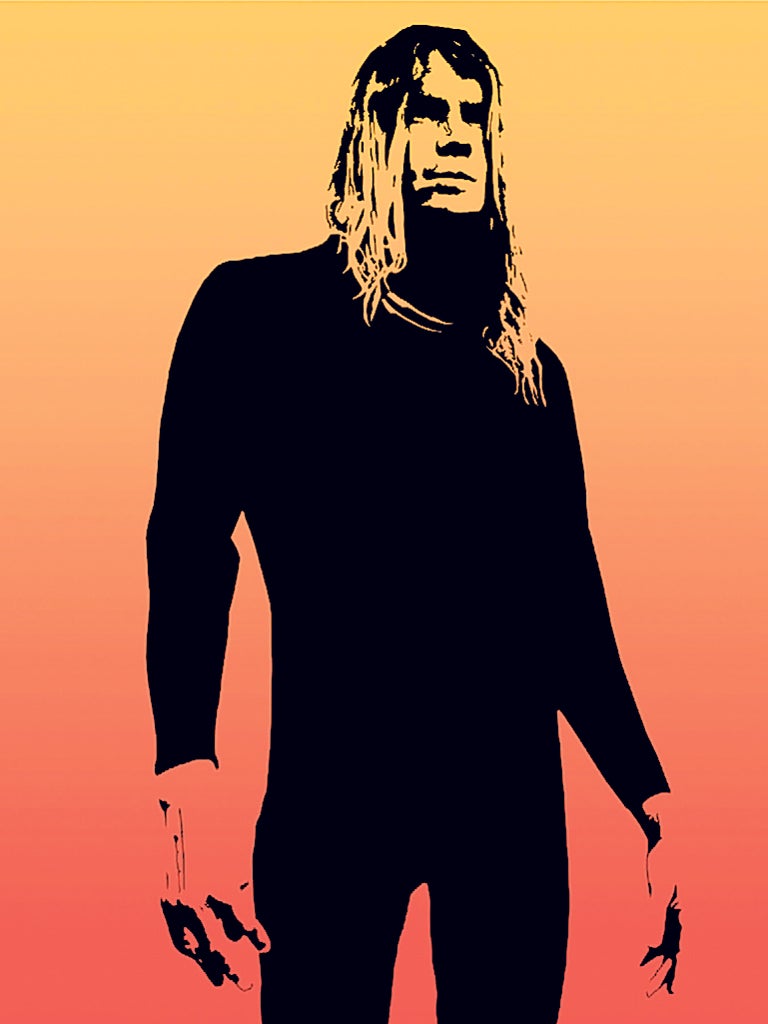Michael Peterson: Surfer whose glittering career was ended by his troubled life

Known as "MP" among the surfing fraternity, Michael Peterson dominated Australian surfing in the early 1970s. But although he was regarded as the best in the world by his peers, his domination never spread beyond his native country. With his aviator sunglasses, leather jacket and brooding aura, Peterson was nothing short of intimidating. Resented by some but adored by the majority, he was supremely talented, but his career hit the buffers before it had had chance to blossom.
At his peak, Peterson, who was aloof, awkward, and monosyllabic on land, was transformed in the sea. His surfing was frenetic and savage; he won Australian titles in 1972 and 1974, and then between 1973 and 1975, won every professional competition in Australia. He set all the standards for the birth of pro surfing's world tour, winning its first official event, the Stubbies Classic at Burleigh Heads in March 1977, when in front of 20,000 he beat the future four-time world champion Mark Richards. He won $5,000 and disappeared. It was his last competition.
Born in 1952 into a poor working-class family, Michael Peterson was the eldest of four children. The family moved from town to town before settling in Tweed Heads and Coolangatta on Queensland's Gold Coast. As a boy, he became a surf lifesaver, winning a number of junior titles. He and his brother started out on surfoplanes, which were primarily designed to float one person and be pushed on to broken waves so that small children could be thrilled by gliding to the shore on a broken wave.
With money short, the boys worked at Kirra Beach Surf Club, where they carried boards for others, then in 1966 they got their own boards – abandoned because they were so badly broken on the rocks at Greenmount (before the days of leg ropes). The boys would take them home, make rough repairs and head back to the water.
When he was 15, the family moved to Coolangatta. With money still scarce Peterson and his brother set up a board- shaping bay, using resin and fibreglass offcuts from local factories. The cut-downs they were making and surfing on put them in the middle of the shortboard revolution, for which Peterson has been credited. He began to explore the innermost limits of tube-riding.
Peterson had shaped the "rocker" apex (underside curvature) back into the middle of his boards, a simple yet revolutionary idea. He would ride it with one foot either side. By shifting his weight on to his back foot, he could slow the board down and get deeper into the tube; putting weight on to the front foot would make the board speed forward. He protected "his" waves fiercely, warning off interlopers with a shrill whistle from inside the tube.
In 1971, Peterson acquired early fame when he appeared in the film Morning of the Earth, which portrayed surfers living in spiritual harmony with nature. The following year, he was on the cover of Tracks magazine, the surfer's "bible". The image was the stand-out shot from the film and became known as "the cutback"; it showed Peterson, tall and muscular, long hair flying, doing a big cutback at Kirra. This ignited his career.
Already a heavy user of marijuana, Peterson got his first taste of heroin in 1974. Within a year he was a regular user, as were a growing number of the surfing community. This, coupled with his undiagnosed schizophrenia, would lead to his spectacular downfall.
Peterson had less good fortune in the Hawaiian arena, his best result being seventh place at the 1974 World Cup, although he received rave reviews for his high-tech, high-speed carving at Sunset Beach. Back home his success continued but his behaviour grew more and more erratic. During a presentation at Bells in 1975, he hid in the bushes rather accept his victory trophy. He attributed his love of being inside the barrel of a wave to the fact that no one could see him in there.
In 1983, while sleeping in his car on the side of the highway between the Gold Coast and Brisbane, he was awoken by police sirens heading the other way. Panicked, he sped off. A hundred miles and 35 police cars later he was stopped at a roadblock, telling the arresting officer he had "successfully outrun the aliens". This led to his diagnosis as a paranoid schizophrenic.
After being jailed and spending some time in various institutions, Peterson was released into his family's care. He disappeared for almost 20 years, his daily intake of pills sending his weight ballooning to the point where those who had known him in his youth could barely recognise him.
Despite his tribulations, there is no denying that Peterson was an integral figure in surfing's history. As his biographer Sean Doherty said, "He was an icon and embodied the zeitgeist of his time." He died of a heart attack.
Michael Peterson, surfer: born Queensland 24 September 1952; died Queensland 29 March 2012.
Subscribe to Independent Premium to bookmark this article
Want to bookmark your favourite articles and stories to read or reference later? Start your Independent Premium subscription today.

Join our commenting forum
Join thought-provoking conversations, follow other Independent readers and see their replies